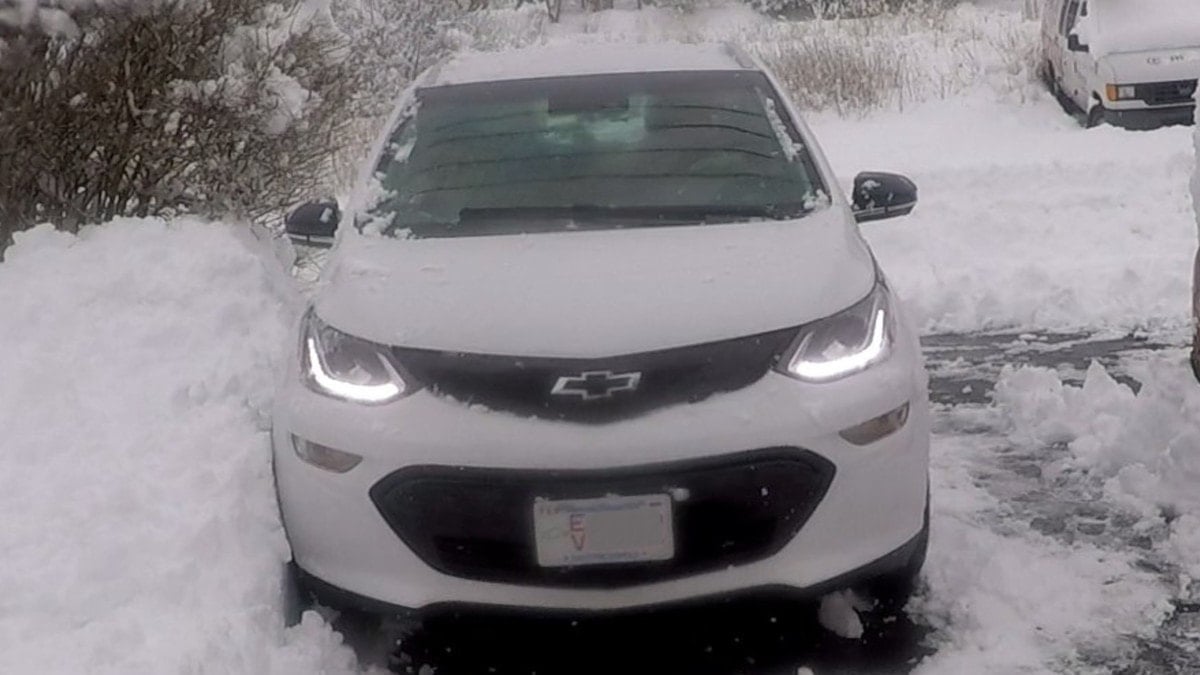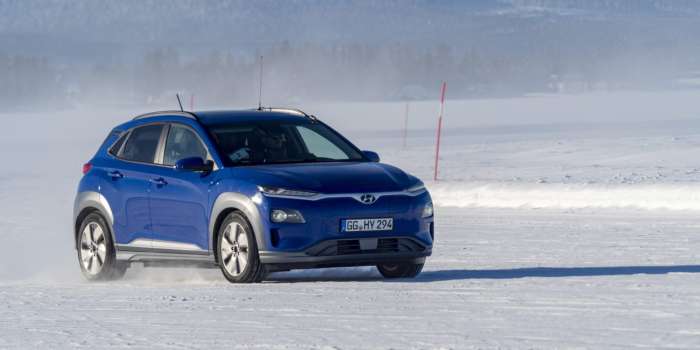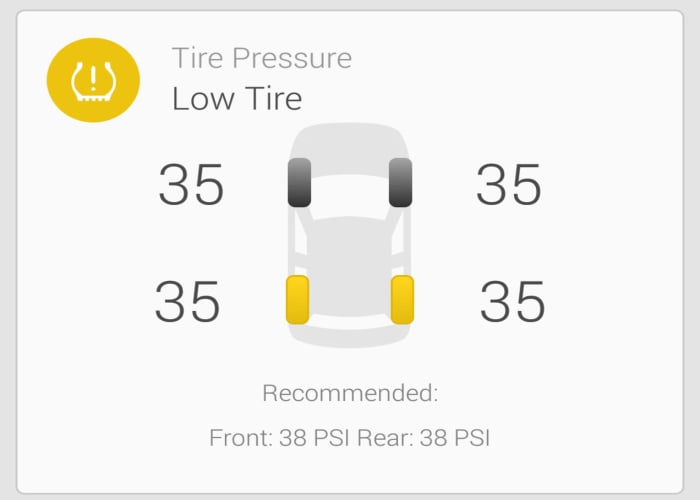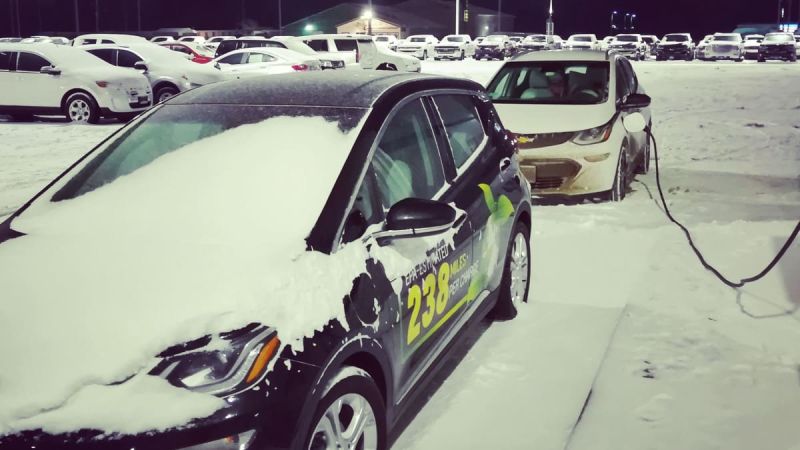I know many of us don’t want to acknowledge this as we’re midway through autumn, but winter is right around the corner. Even if the official start of the season doesn’t hit until late December, we all know the temperatures are dropping and the last strains of late afternoon sunshine are beginning to fade.
From here, it’s all decreased range and tougher road trips for EV owners in many areas of the country. But no, don't despair...
With today’s electric vehicles increasingly capable of traveling long distances on a single charge and a North American charging infrastructure that seems to be improving by the day – yes, even for us non-Tesla owners! – winter isn’t as bad as it used to be in an EV.
6 Tips for Electric Cars in Winter
This will be our fourth winter with a plug-in electric vehicle, and third with our 2017 Chevy Bolt EV. I've learned a few things about preparing for winter in an EV along the way, both locally in New England and further afield, traveling for holidays across upstate New York on the way to Ohio.

Snow, ice, and temperatures below freezing certainly don't help the EV driver, but it doesn't have to ruin the season entirely.
These six tips summarize how we keep things rolling in our Chevy Bolt EV, then we'll dive into each of them to look at how they apply to driving other electric vehicles in winter.
1. Stay plugged in overnight and precondition close to departure.
2. Add destination charging to overnight road trips (and check the local charging network).
3. Build an additional buffer to your regular range.
4. Make the most of accessories and insulation.
5. Treat your windscreen to aid defogging.
6. Check your tire pressure when the temperatures start to drop.
Plug In and Precondition
This could be the EV equivalent to "Keep Calm & Carry On" if anyone cares to design a logo and print up some posters. You'll find that preconditioning tops many lists of winter advice for EV drivers, and with good reason.
Keeping the car plugged in overnight is probably part of the routine for most EV drivers, but preconditioning might not be part of that process. On a recent AMA with a Chevy Bolt EV battery engineer, the recommendation was to precondition the car twice before departure, while still plugged in. Drawing power from the wall rather than the car's battery, the cabin is already toasty when you set off, without losing that all-important energy - and therefore range - from the pack.
It goes without saying that if you have a garage or carport under which to park your vehicle, take full advantage of that during the winter months. Anything that takes the strain off the battery, or which simply lets you hop in the car and drive off without exposure to the elements, is a smart move as the colder months move in.
Add Destination Charging and Opportunity Charging to Your Itinerary
Winter range loss is an inconvenience in local driving, but the ability to charge at home or utilize the local public charging infrastructure that you're already familiar with makes it manageable in most cases. Take that inconvenience on a longer journey, however, and it quickly turns into a challenge.
Even in today's longer-range electric vehicles like the Chevy Bolt EV, Tesla Model 3, and Hyundai Kona Electric, which come with sophisticated battery management systems to condition the car's battery pack, range loss is an issue on the road. It's not uncommon to lose 30-40% of estimated range during the winter months, which in the Bolt EV turns a highway range of 210-220 miles into 170-180 miles or less, depending on the conditions.
That makes destination charging even more essential on long winter journeys. We covered the convenience of finding overnight charging in our summer EV road trip tips, but in winter it makes even more sense. Book a hotel with a J1772 plug or, at the very least, an Airbnb that will allow you to plug in a portable charger to get some juice while you rest. Be sure to scout out the local charging options near where you're staying as well. If you're spending any amount of time in a new town, it pays to know where you can juice up if the opportunity arises.
For extra preparedness points, consider picking up a Tesla HPWC adapter so that your non-Tesla EV still has an option if the J1772 plug is taken. It hasn't happened to me yet, but we often see at least two Tesla stations to one J1772 station when hotels offer level 2 charging, so consider an adapter if you don't like to gamble.
Watch Torque News EV reporter Eric Way test out his JDapter in the video below.
Build a Range Buffer
To err on the safe side of battery management, many EV drivers set a target charge level of 80-90% for their car when charging at home. This prevents the battery pack sitting with a fully charged battery, which some say will reduce pack capacity in the long-term.
Whether or not this occurs depends a great deal on the vehicle and how its manufacturer designed the battery management system (BMS). Whatever the case, it makes sense to be more flexible about this habit when it comes to winter. Charging to a higher level than normal opens up a little extra range that will help to mitigate the losses that accompany cold weather.
Similarly, build in an extra 15-20 miles buffer than you normally would when fast charging on a longer trip. If you would normally charge to 20 miles above your required distance, for example, make it more like 40 miles in winter. This gives you a more comfortable buffer in the event that the heater draws more energy than expected or road conditions detract from your driving efficiency.

Take Advantage of Accessories
It should go without saying, but this could be useful for anyone considering what features to look for in an EV: add any options that include heating or insulation that doesn't draw energy from the main battery pack.
For example, our 2017 Chevy Bolt EV Premier comes with both front and rear heated seats, as well as a heated steering wheel as an additional winter bonus for the driver. The latest version of the Hyundai Kona Electric also brings a cold-weather package to the United States, so we can see that winter performance is becoming a priority for automakers when it comes to electric vehicles. These are all creature comforts that can indirectly extend range during the winter months.
Watch how our Chevy Bolt EV handles the New England winter in the video below.
Finally, if your vehicle has a panoramic roof, winter is a good time to bring the cover back over it or invest in an aftermarket solution that gives you a bit more insulation. After all, once you've done the hard work to get the cabin warmed up, you want to keep that heat right where it is!
Treat Your Windscreen
Even if your intestinal fortitude extends to driving with no cabin heat in frozen conditions, a fogged-up windscreen can quickly disrupt your plans to not use your EV's HVAC system.
The Chevy Bolt EV does a great job of quickly removing moisture from the windscreen, but it comes at a cost. The 7kW draw on the battery pack reduces range in just the same way as blasting the heat for personal comfort. If you follow the tip above, that energy comes from the wall prior to departure, but after that it's a battle to keep the windscreen clear without sucking too much energy from the car's battery pack.
Fortunately, there are a few things you can try to keep your visibility high and your energy use low while in transit:
- Use an ammonia-based cleaner to remove debris and film that can accumulate on the windscreen and retain moisture.
- Try dehumidifier dessicant (or possibly cat litter in a sock) at the base of your windscreen to soak up moisture.
- Turn off air recirculation or crack the windows slightly to pull drier outside air into the vehicle.
Defogging is something of a balancing act, as the very act of heating up the cabin with warm, moist air is what speeds the condensation process against colder outside air. Nonetheless, cleaning your windscreen and removing as much moisture from the surrounding air as possible should help to minimize how often you need to blast the hot air.
Check Your Tire Pressure
A simple tip yet often overlooked, as tires don't deflate overnight but do start to run lower as temperatures drop. A rule of thumb is a drop of 1 PSI for a drop of 10 degrees (F), which can easily put you below the recommended pressure as the winter months arrive.

In the image above, you can see that we've dropped to 35 PSI over the past week in Boston, as the temperatures have dropped from the mid-50s to low 30s Fahrenheit. This pulled us down from the recommended 38 PSI and will increase the rolling resistance on our tires, which in turn leads to decreased efficiency and a loss of range if we don't reinflate them.
If you're heading out on the road, carrying a portable air compressor that can run off the car's 12-volt battery is also a convenient way to guard against those sudden drops in temperature and tire pressure.
Bonus Tip: Bring Back-Up Winter Gear
No-one wants to bundle up too much in the car, but it's worth having extra winter items on hand if the temperatures suddenly plummet en route or when you need to eke out those final few miles of range on a long trip.
For that reason, items like thermal undergarments and electric blankets that pull from the car's 12v battery, rather than its high voltage system, are popular recommendations on EV forums. Mixed with heated seats, a heated steering wheel, and cabin heat cycling, these items serve to keep you warm while minimizing winter range loss. It's the last resort, but it could help you out in a pinch.
As the inevitable articles appear lamenting electric vehicles because of their winter performance, remember that our gasoline counterparts still suffer from lower efficiency and additional performance issues during the frozen months as well. Meanwhile, across the remaining three seasons, battery electric vehicles are able to meet - and often significantly exceed - their range estimates with minimal maintenance and the instant acceleration that most combustion engines simply can't match.
So follow these simple tips, stock up on some warm winter gear, and enjoy a quiet, gas-free season on the road in your electric vehicle!
What did we miss? Share your tips for a stress-free EV winter with us in the comments below.
Steve Birkett is an electric vehicle advocate at Plug & Play EV. You can follow him on Twitter at @Plugandplayev, Instagram and Youtube at Plugandplayev Channel to send him EV news tips.













Comments
This is all well and good,
Permalink
This is all well and good, and the advice is widely applicable, but I am compelled to point out that it doesn't get cold in New England.
- Winnipegger.
You win this round, Winnipeg!
Permalink
In reply to This is all well and good, by Rennie Allen (not verified)
You win this round, Winnipeg!
That said, cold enough for a deep freeze is cold enough to give the battery pack some grief, so this should be of use to the majority of us in wintery states south of the border.
Is it true that your 2017
Permalink
Is it true that your 2017 BoltEV Premier has heated seats front and back?!
Yes, it's listed on the
Permalink
In reply to Is it true that your 2017 by Ed Merryman (not verified)
Yes, it's listed on the official 2017 trim sheet here - http://www.mychevybolt.com/wp-content/uploads/2015/01/2017-chevrolet-bolt-trim-comparisons-LT-Premier-752x1024.jpg - and I confirmed that's still the case on the 2019 model. Oddly, we hardly use the rear option because the kids have their separate car seats back there and it doesn't really help. Grateful for the front heated seats and steering wheel, though, as well as the ability to precondition via Amazon Echo as we try to hustle out the door on a cold winter day!
If you're concerned about
Permalink
If you're concerned about moisture in a sealed car, a pan of calcium (not sodium) chloride ice melter will draw gallons of it out of the air. A crust will form on the surface of the chemical and must be broken up to expose more surface area. CaCl2 is own of the best dessicants around, and is plenty cheap.